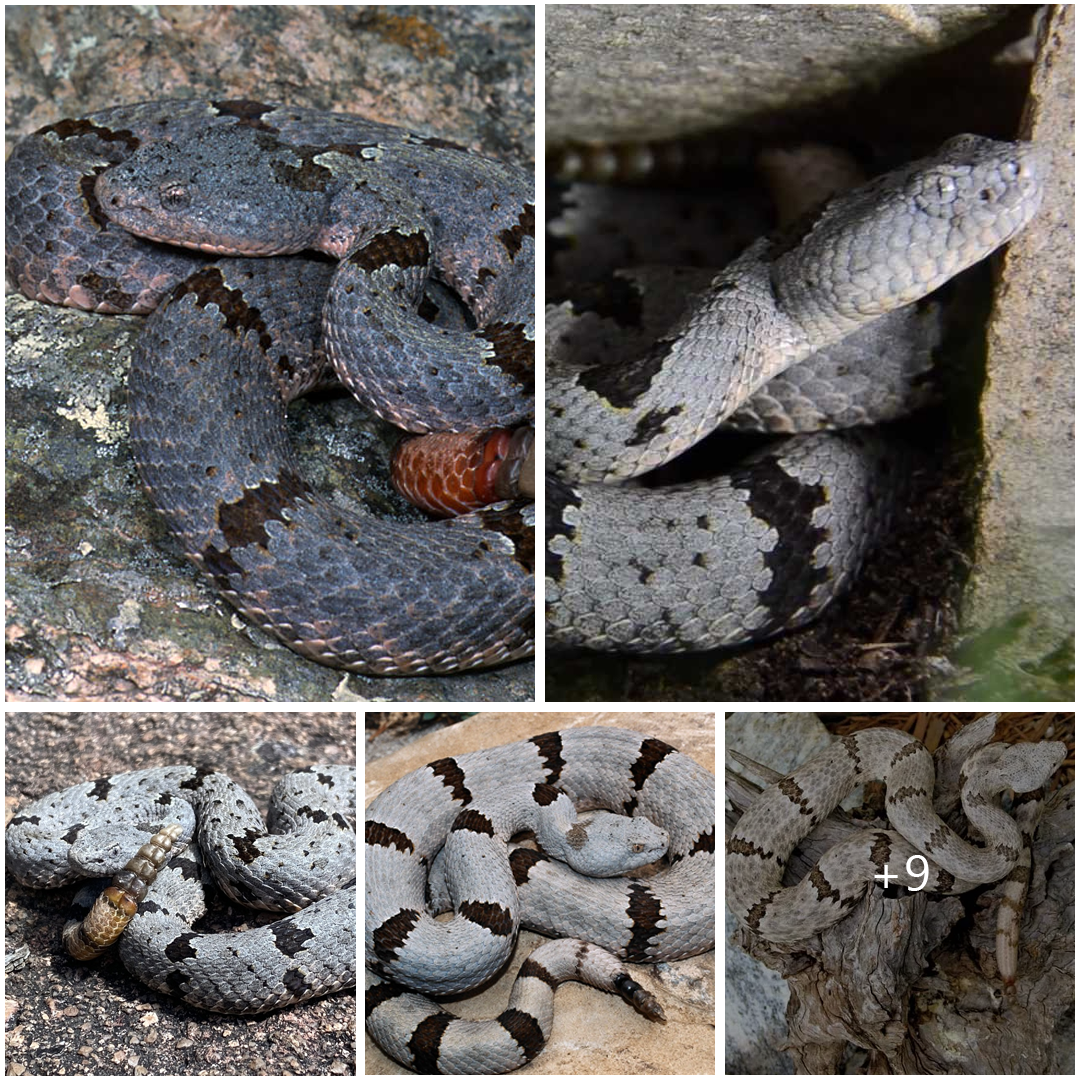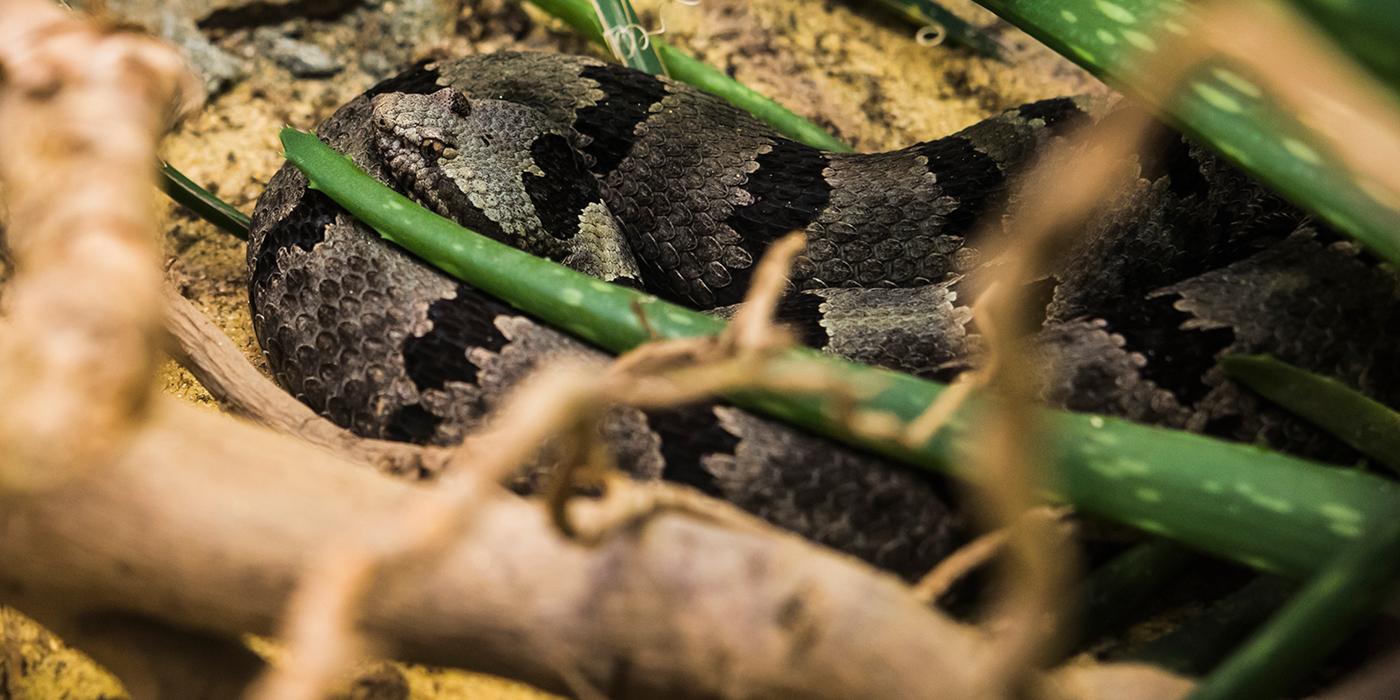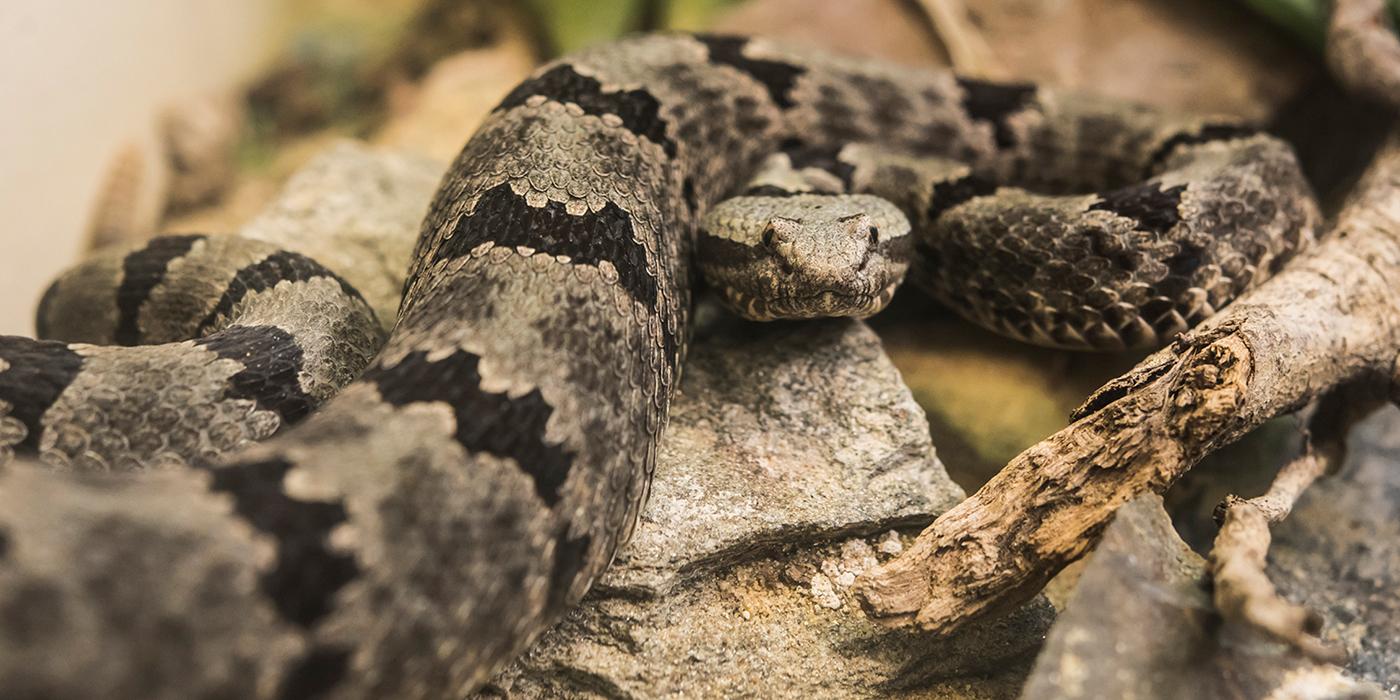
Unveiling the Banded Rock Rattlesnake: A Master of Adaptation in Harsh Environments
In the rugged landscapes of North America, a stealthy predator lurks among the rocky outcrops and arid deserts, known as the Banded Rock Rattlesnake (Crotalus lepidus). With its distinctive markings and specialized adaptations, this enigmatic serpent navigates its harsh habitat with finesse and precision. Join us as we uncover the secrets of the Banded Rock Rattlesnake and explore its fascinating world.
Distinctive Appearance: Admiring the Markings of the Banded Rock Rattlesnake
True to its name, the Banded Rock Rattlesnake sports a striking pattern of alternating light and dark bands that provide effective camouflage among the rocky terrain it calls home. Its coloration can vary from pale gray to reddish-brown, with darker bands that help it blend seamlessly into its surroundings. In addition to its camouflaging markings, the Banded Rock Rattlesnake possesses heat-sensing pits on its face, allowing it to detect warm-blooded prey even in low light conditions.
Habitat and Range: Thriving in Harsh Environments
The Banded Rock Rattlesnake is typically found in rocky habitats such as canyons, cliffs, and rocky slopes, where it can take refuge in crevices and bask in the sun to regulate its body temperature. Its range extends across the southwestern United States and northern Mexico, encompassing regions with hot, arid climates and sparse vegetation. Despite the challenges posed by its harsh environment, the Banded Rock Rattlesnake has evolved specialized adaptations to thrive in these unforgiving landscapes.

Feeding Behavior: Hunting Strategies of the Banded Rock Rattlesnake
As an ambush predator, the Banded Rock Rattlesnake relies on stealth and patience to capture its prey. It preys primarily on small mammals, lizards, and birds, using its venomous bite to immobilize and subdue its victims before consuming them whole. By lying in wait among rocky crevices or concealing itself beneath vegetation, the Banded Rock Rattlesnake is able to surprise unsuspecting prey with lightning-fast strikes, demonstrating its prowess as a skilled hunter.
Conservation Status: Challenges and Concerns
While the Banded Rock Rattlesnake is not currently listed as endangered, it faces threats from habitat destruction, fragmentation, and human persecution. Encroachment of urban development into its natural habitat, as well as collection for the exotic pet trade, pose significant challenges to the long-term survival of this species. Conservation efforts focused on habitat preservation, public education, and responsible management of human-wildlife interactions are essential for ensuring the continued existence of the Banded Rock Rattlesnake in the wild.
Conclusion: Appreciating the Resilience of the Banded Rock Rattlesnake
In conclusion, the Banded Rock Rattlesnake is a fascinating example of adaptation and resilience in the face of harsh environmental conditions. With its distinctive appearance, specialized adaptations, and stealthy hunting tactics, this elusive serpent thrives in rocky habitats where few other creatures dare to tread. As we strive to protect and preserve its natural habitat, we gain a deeper appreciation for the intricate web of life that exists in some of the most inhospitable environments on Earth.






